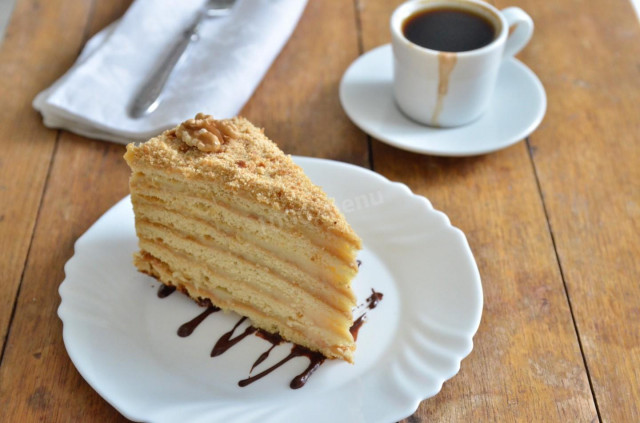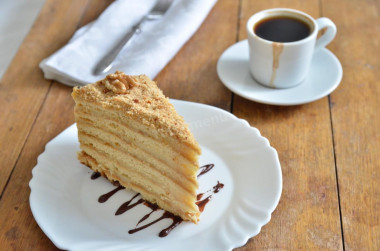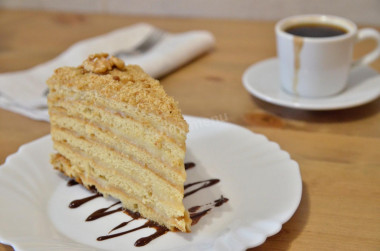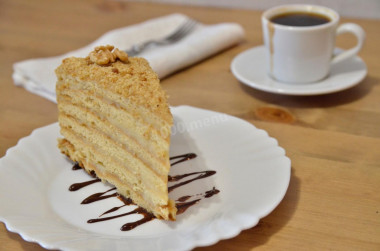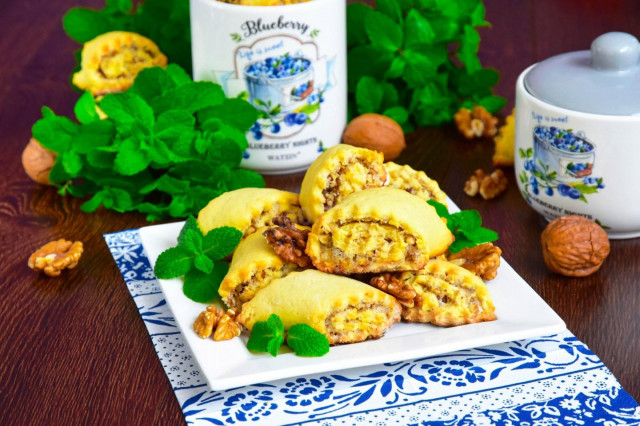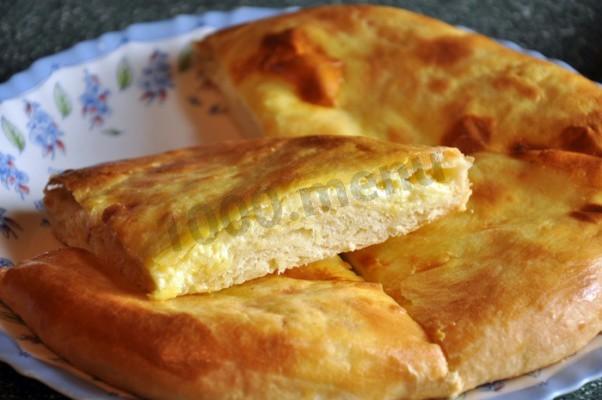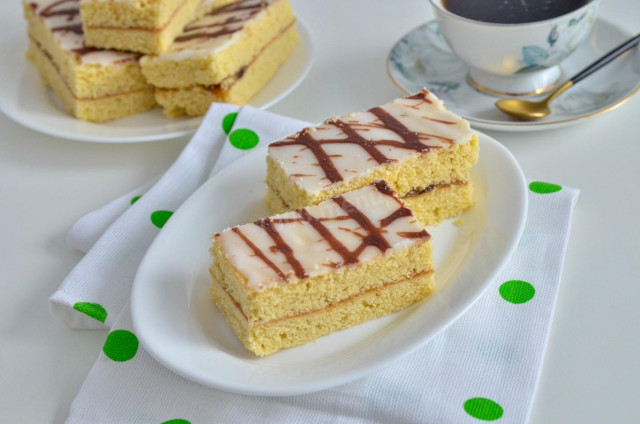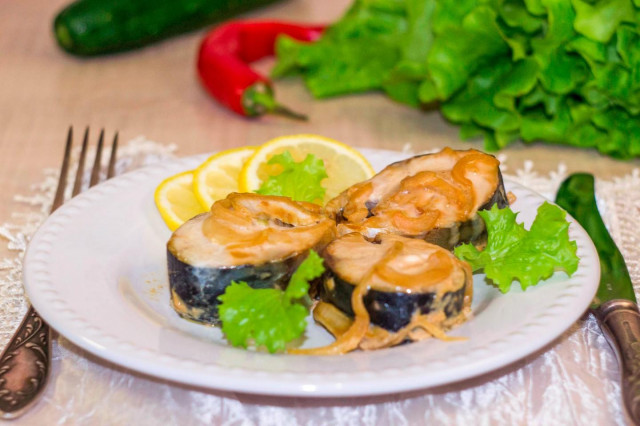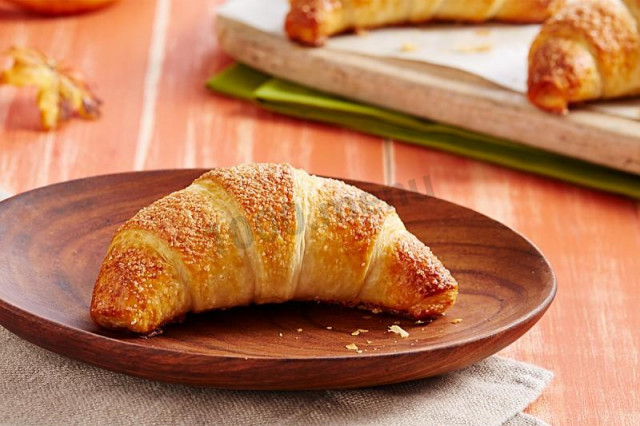Composition / ingredients
Step-by-step cooking
Step 1:
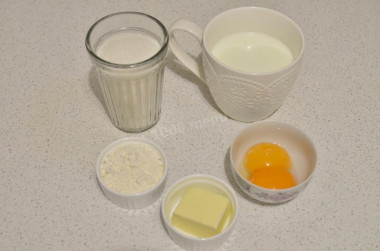
First you need to prepare the cream. Prepare the products.
Step 2:
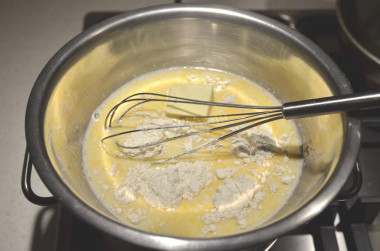
Grind the yolks a little with sugar, add all the other products and put the bowl on a water bath.
Step 3:
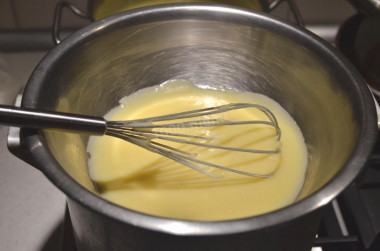
Constantly stirring, cook the cream until thickened. Cool, cover with cling film in contact, so that a crust does not form.
Step 4:
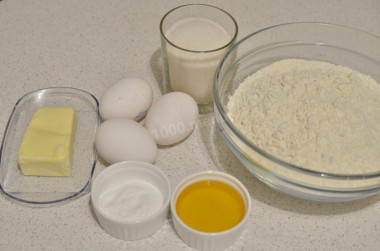
Prepare the products for the cakes.
Step 5:
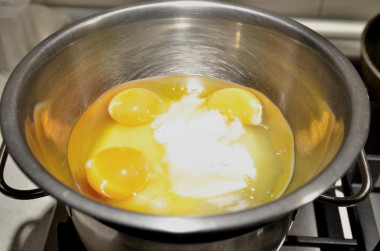
Put everything in a bowl, put it in a water bath.
Step 6:
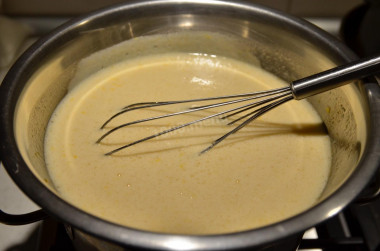
Cook, stirring constantly, until the mass increases three times.
Step 7:
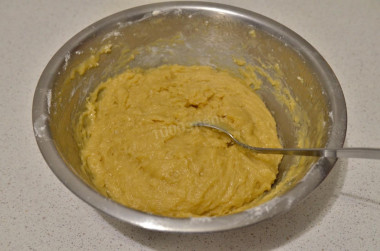
Remove from the bath, cool slightly and add flour. Knead the dough. It will be a little sticky.
Step 8:
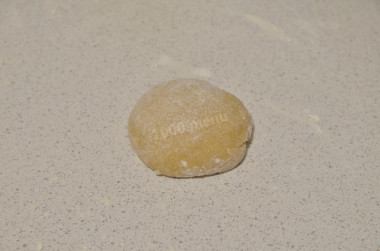
Divide the dough into 6 balls. It is more convenient to take the dough with a spoon and put it on a table sprinkled with flour, forming lumps.
Step 9:
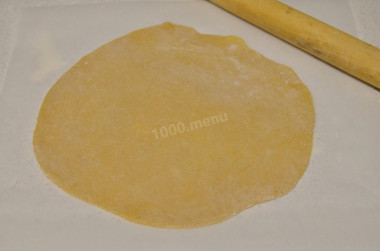
Roll out each ball, sprinkling the table and dough with flour so that it does not stick. Transfer the blank to the parchment.
Step 10:
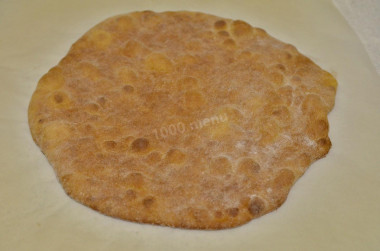
Bake the cakes in a preheated 200 degree oven until golden brown, about 3 minutes.
Step 11:
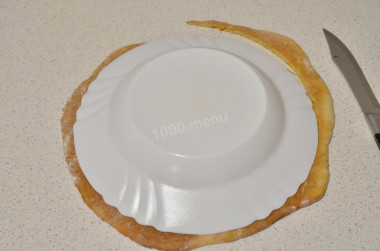
Trim the cakes to the desired size.
Step 12:
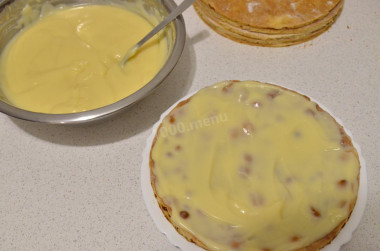
Smear the cakes with cream.
Step 13:
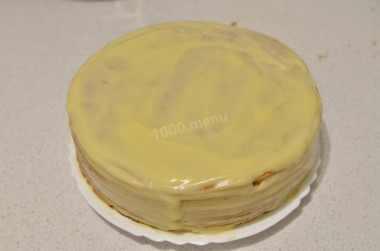
Assemble the cake.
Step 14:
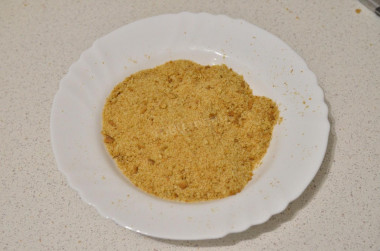
Crumble the cake trimmings.
Step 15:
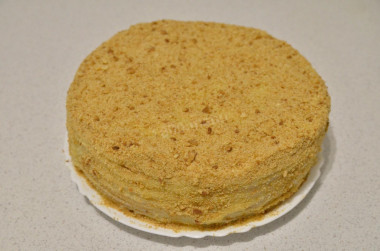
Sprinkle the cake on top and sides.
The specified amount of cream is according to the recipe, I usually cook three servings. Then there will be a lot of cream, it will soak the cakes well and the cake will be soft. If you follow the exact recipe, you will get a slightly dry, but more familiar taste, like a classic Honey Cake. If you are an experienced cook and have already prepared custard more than once, then you can refuse to use a water bath to prepare the cream. Take a dish with a thick bottom and cook the cream constantly stirring over low heat until the first bubbles. The main thing is not to turn the mass into an omelet. If you are afraid, still use a water bath. I was not mistaken when I wrote that the butter for the cream should be cooked together with the rest of the products, and not injected later. You can do both, and there is no difference. The cream turns out to be equally delicious. When preparing cakes, the specified amount of flour is approximate. Do not pour out all at once, start with two glasses, and then add as needed. The dough should not be steep, it is better if it is soft, then the flour will also be added when rolling out. Cakes are baked quickly, while one is baking, you need to quickly roll out the other. The cake tastes better after a night in the refrigerator.
Caloric content of the products possible in the composition of the dish
- Whole cow's milk - 68 kcal/100g
- Milk 3.5% fat content - 64 kcal/100g
- Milk 3.2% fat content - 60 kcal/100g
- Milk 1.5% fat content - 47 kcal/100g
- Concentrated milk 7.5% fat content - 140 kcal/100g
- Milk 2.5% fat content - 54 kcal/100g
- Chicken egg - 157 kcal/100g
- Egg white - 45 kcal/100g
- Egg powder - 542 kcal/100g
- Egg yolk - 352 kcal/100g
- Ostrich egg - 118 kcal/100g
- Honey - 400 kcal/100g
- Whole durum wheat flour fortified - 333 kcal/100g
- Whole durum wheat flour, universal - 364 kcal/100g
- Flour krupchatka - 348 kcal/100g
- Flour - 325 kcal/100g
- Granulated sugar - 398 kcal/100g
- Sugar - 398 kcal/100g
- Butter 82% - 734 kcal/100g
- Amateur unsalted butter - 709 kcal/100g
- Unsalted peasant butter - 661 kcal/100g
- Peasant salted butter - 652 kcal/100g
- Melted butter - 869 kcal/100g
- Vodka - 235 kcal/100g
- Egg yolks - 352 kcal/100g
- Baking soda - 0 kcal/100g

